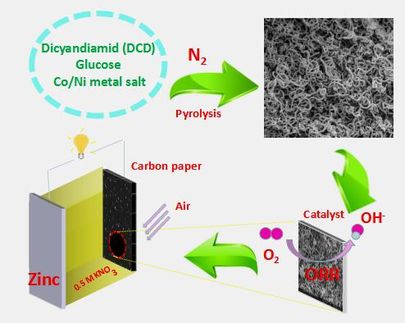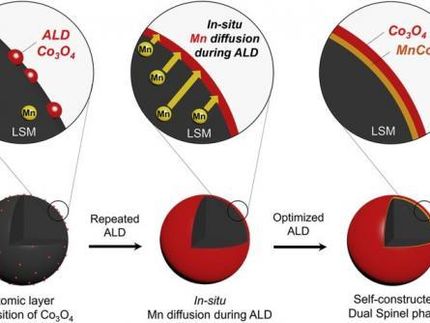When ions go hiking: New Insights into Solvation Kinetics at Electrocatalyst Surfaces
Crucial for the development of more efficient batteries and electrolyzers, or to fight corrosion
Advertisement
The Interface Science Department of the Fritz- Haber Institute has made additional strides toward "Exploring Dynamic Solvation Kinetics at Electrocatalyst Surfaces," as detailed in their article in the journal Nature Communications. Among other reactions, the researcher focused on the ion solvation kinetics when evolving green hydrogen and when oxidizing green ammonia, two key chemicals in the green energy transitions. These findings are important because they help us better understand the pathways that electrolyte ions take on their way toward solid surfaces. Knowing the valleys and mountains and the number of trails that the ion is encountering is crucial for developing more efficient batteries and electrolyzers or to fight corrosion. Imagine, we could follow and even control the ion’s hiking trail to create more eco-friendly, durable and powerful energy sources – these new insights bring us closer to that goal.
The ion’s pathway is strongly influenced by a process that is ubiquitous across bio- and electrochemistry: ions need to reorganize their solvation shell before they can intercalate into battery cathodes, enter ion channels across biochemical membranes or adsorb and convert to chemicals, such as green hydrogen, on electrocatalyst surfaces.
Previously, the team discovered that the kinetics of interfacial ion solvation are governed by so-called compensation effects between the activation entropy and enthalpy. In other words, as the elevation of the mountain in front of the ion is raised, the number of available hiking trails increases, making it more likely for the ion to go on the hike. To come to these conclusions the team interpreted the kinetics according to statistical physics and the Eyring-Evans-Polanyi equation, the center piece of transition state theory from 1935, which was codeveloped by Michael Polanyi, head of the Physical Chemistry Department of FHI until 1933.
Now, almost 90 years later, the researchers of the Interface Science Department are able to tract the two key parameters of transition state theory, the activation enthalpy and activation entropy with a millisecond time resolution. “Our findings are really substantial on many fundamental levels.” says Francisco Sarabia, first author of the study and Marie Curie Postdoctoral Fellow. “Using this technique, we can directly access the electrosorption kinetics of hydroxide ions that occur at specific structural surface motifs, e.g., step-edges or defects, and show how they are linked to electrocatalyst kinetics. Further, we studied the dynamic poisoning behavior of the Pt surface during the ammonia oxidation reaction and how it impacts the solvation kinetics. This level of insight has remained completely hidden, so far.”
Overall, the work further supports the notion that activation entropy changes at the catalyst surface and in the interfacial solvent are critical to understand electrocatalyst activity. For example, the team discovered that the pH can directly impact the activation entropy and induce non-Nernstian activity changes with pH. Currently, it is widely assumed, that the activation energy plays the primary role in the bias dependence of electrocatalytic reactions.
Dr. Sebastian Öner, Group leader at the Interface Science Department and corresponding author of the study, further emphasizes the importance of these findings. “Abundant operando spectroscopy and microscopy evidence, including from my colleagues here at the Inorganic Chemistry and Interface Science Departments, show that catalyst surfaces are highly dynamic. Beyond studying solvation kinetics, we now have a tool, that we can apply to capture true kinetic information in real-time and overlay it with spectroscopic and microscopic information.”
The research of the team highlights the importance of bias dependent changes in the local environment of catalysts, showing how the solid structure and liquid electrolyte are closely interconnected and can influence each other. This comprehensive understanding is crucial for developing catalysts with improved activity, selectivity, and stability.
The Interface Science Department, led by Prof. Dr. Beatriz Roldán Cuenya, is committed to further exploring these insights, with the potential to significantly impact the fields of energy and chemical conversion technology.
Original publication
Other news from the department science
Most read news
More news from our other portals
See the theme worlds for related content
Topic World Battery Technology
The topic world Battery Technology combines relevant knowledge in a unique way. Here you will find everything about suppliers and their products, webinars, white papers, catalogs and brochures.

Topic World Battery Technology
The topic world Battery Technology combines relevant knowledge in a unique way. Here you will find everything about suppliers and their products, webinars, white papers, catalogs and brochures.


































































